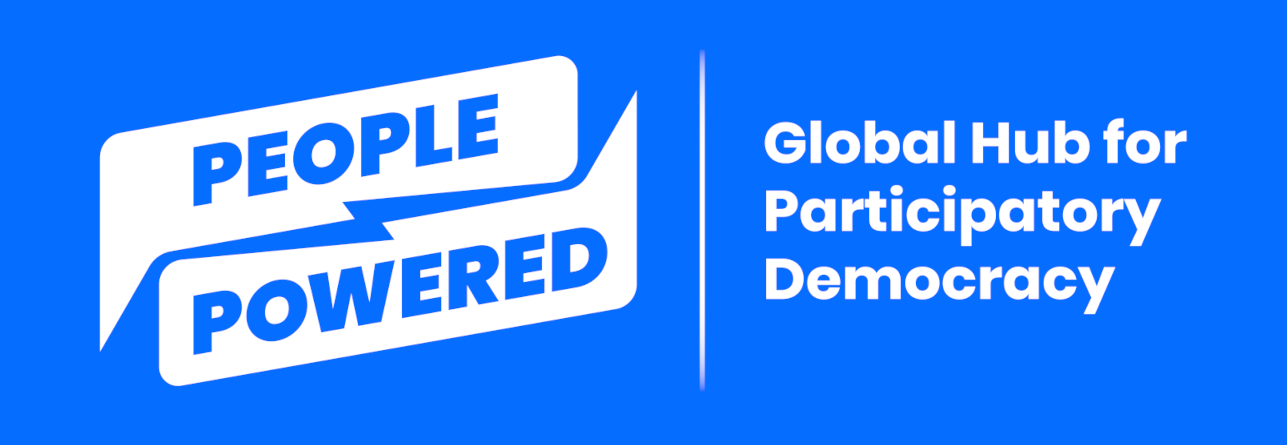Large Scale Digital Participation: Participatory Budgeting at the National University of Rosario
/How can participatory democracy programs quickly go online, and still be meaningful and inclusive? The National University of Rosario (UNR) offers a new model for how to navigate this transition. It is running the largest university participatory budgeting (PB) program in the world - all online.
Faced with the pandemic and social distancing, the UNR decided to continue implementing PB, rapidly transitioning the process from in-person to online. Using a digital platform designed with People Powered member organization Democracia en Red (DeR), the 100,000 person university community is reconnecting and deciding how to invest 18,000,000 pesos.
This transition was led by a Managing Team composed of representatives from all university faculties and schools. It was coordinated by Cintia Pinillos, with Gisela Signorelli as Technical Secretary and an Advisory Committee that included Global PB Research Board member Alberto Ford.
Alberto, Cintia, and Gisella, along with Agustín Frizzera (DeR), share this report on the PB process and lessons learned:
What are we doing?
This year we’re implementing the first edition of Participatory Budgeting at the National University of Rosario (PP UNR). Yes, this year, the year of the pandemic.
We had imagined it being in person, with lots of people meeting in different locations, sharing mate tea around a table. And then during the first planning meetings, the pandemic struck. The forced isolation and social distancing imposed by the Argentine government challenged us to redesign the entire process and turn it digital.
The National University of Rosario (Universidad Nacional de Rosario, or UNR) is a community of around 100,000 people, including teachers, students, and staff, along with a huge number of graduates - these make up the four university communities that we engaged. These people are part of 12 faculties and three trade schools for vocational education, which combined make up the territory of the university. Most are located in the city of Rosario and a few neighboring cities.
The UNR PB is structured as two independent participatory processes, which for this first round are implemented simultaneously: 1. Faculty PB, which involves people from the four university communities who are part of the 12 faculties and other related bodies; and 2. School PB, where each of the trade schools functions as its own independent universe.
The amount dedicated in the 2020 cycle is 15,000,000 Argentine pesos ($150,000 USD) for the Faculty PB and 1,000,000 ($10,000) for each of the three School PBs. This is a big investment in local terms, and even more so in the context of the pandemic, with most participatory programs abandoned or suspended.
Who is running the PB?
We began 9 years ago with PB at the Faculty of Political Science and International Relations (PB FCPOLIT). Franco Bartolacci, the dean of the faculty, was elected rector of the university in 2019, and one of his first decisions was to implement PB in the entire university.
The Technical Coordinators of the UNR PB, a small team that had already been working on PB FCPOLIT, work with the Managing Team, composed of representatives from the 12 faculties and 3 trade schools. Together, they make decisions and plan the activities. They also collaborate with an Advisory Council of specialists in participatory politics, which assist with the design of the process and support its implementation.
When we decided to move forward with digital participation, we signed an agreement with Democracia en Red (DeR), an organization that specializes in developing and promoting digital participation tools. DeR was in charge of designing, with the Coordinators and Managing Team, the platform for virtual participation.
Finally, there is a PB Cabinet of staff from the different parts of the university, which is in charge of assessing the technical and financial feasibility of the projects.
How are we doing it?
We organized the PB in three stages, defined in a rulebook:
1. University and School Forums (June - August) People throughout the university community propose ideas for different themes (infrastructure, services, environment and sustainability, media, etc.) and discuss and revise the ideas. Som people sign up as project champions for the second phase.
2. University Commission and School Councils (September - November) The project champions meet in two or three rounds across two months to transform the ideas into feasible projects, together with the technical staff of the PB Cabinet.
3. University and School Decides (End of November) The university community chooses the projects to implement in the following year, for secret and equal vote (1 person, 1 vote).
Achievements
In record time we adapted an in-person process into a digital process, with an online platform to submit ideas, comments, and ratings, and register for the process.
The university community participated massively in the virtual forums. More than 14 thousand people used the platform, submitting 600 ideas in 15 days, and then commenting on and monitoring the progress of ideas.
The online forums created a university space during the pandemic, a space for discussing both long-term issues and new ideas that surfaced from the pandemic.
The coordinating teams communicated regularly, creating a space for coming together in a time of isolation.
The participation platform was rapidly incorporated into the broader repertoire of the university, alongside other spaces of representative participation. This led to a “meta conversation” beyond the confines of this process.
Challenges
How to promote and manage massive participation in online tools, while supporting respectful debate and building agreement?
How to promote the development of projects that transcend beyond one part of the community or one faculty?
How to address institutional resistance to PB, since it aims to break with the inertia of bureaucracy and traditional power structures?
Recommendations
Don’t try to replicate face to face engagement with digital engagement, because the interfaces are different.
Complement virtual and network communication with one-on-one personalized communication, oriented toward different groups. This generates commitment and motivation.
Create a motivated and flexible core team, with enough capacity. Recognize its work adequately.
Pay attention to digital divides across the community.
Promote horizontal dialogue between participants, with information, respect, freedom, and facilitators.
Monitor progress during the whole process, with members of each university community.
Produce clear and precise information for the different actors who participate.





